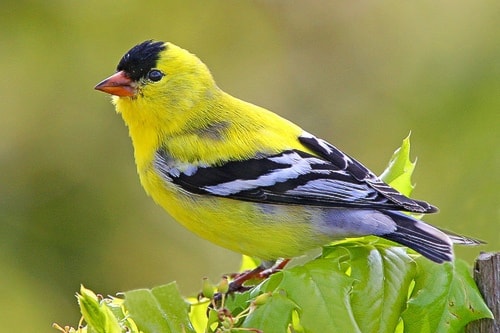Daryl Calder
Birds that stay with us through the winter appreciate our efforts to establish and maintain feeding stations. Last year, a dozen or more species came to feed in the backyards and gardens of our town.
Taking an active interest in feeding and protecting birds is important because birds protect us. Without the destruction of insects by birds, life on earth for man would be utterly impossible. Let's feed and protect our feathered benefactors!
Project FeederWatch is Bird Studies Canada's largest and longest running volunteer bird survey. Now in its 27th year nationwide, Project FeederWatch has over 2,800 Canadian participants, and more than 20,000 in total. On a per capita basis, Canadian participation is higher than in the U.S. Possible reasons include the survey's Canadian roots and our colder climates, which may motivate more of us to take up bird-feeding as an enjoyable winter pastime.
Every year, FeederWatch observations are added to the quickly-growing database, increasing our understanding of winter bird populations.
In B.C., Pine Siskins visited 68 per cent of feeders. Siskins usually make a strong appearance every other year in B.C., but they irrupted in 2013 for the second year in a row. Red-breasted Nuthatches were at a record high, and irruptive Common Redpolls visited 40 feeders. If you are not yet a participant and would like to join, visit www.birdscanada.org/volunteer/pfw. You will find an interesting and easy-to-navigate site.
Try to place your feeders in a quiet area where they are easy to see and convenient to refill. Place feeders close to natural cover, such as trees and shrubs which offer refuge to birds as they wait their turn to feed. Evergreens are ideal, as they provide thick foliage that hides birds from predators and buffers winter winds.
Be careful not to place feeders too close to cover with strong branches that can provide good jump-off points for squirrels and cats. A distance of about 10 feet seems to be a good compromise. You can provide resting and escape cover for ground-dwelling birds, such as song sparrows, by placing loosely stacked brush piles or tepees near your feeders.
The most common type of seed offered at feeders in North America is black-oil sunflower seed. This small sunflower seed is high in energy and has thin shells, making it the preferred food item for a wide variety of birds. This food is a favourite of Chickadees, Finches and Sparrows, as well as Nuthatches and sometimes Woodpeckers. Hulled sunflower seeds provide a work-free bird meal. However, this seed must be kept dry as it tends to spoil more quickly than seeds in the shell.
Nyger, an imported seed, has become increasingly popular because of its ability to attract Finches, including American Goldfinch, Pine Siskin and Common Redpoll. A special feeder with very small feeding ports will prevent the seed from falling on the ground. To prevent waste, it is best to feed Nyger seed by itself rather than in a mix.
Of course, many birds enjoy suet and peanut butter mixes. Now that the bears are sleeping, we don't have to worry about such powerful attractants. Liquid water is sometimes difficult for birds to obtain; a simple 40 watt heated dog dish is simple and inexpensive. Birds are reluctant to get their feet and feathers wet in cold weather; an adequate perch must be made available.
Please contact Rocky Mountain Naturalists if you wish to be a feeder watcher during the upcoming Christmas Bird Counts in our towns.
In Cranbrook, Saturday December 28, Greg Ross, 250-489-2566.
In Kimberley, Saturday January 4, Dianne Cooper, 250-427-1921.
Top 10 birds for the 2012-13 season in B.C.
Dark-eyed Junco
Northern Flicker
Red-breasted Nuthatch
Black-capped Chickadee
Song Sparrow
Pine Siskin
Downy Woodpecker
House Finch
American Robin
Spotted Towhee
Submitted by Daryl Calder on behalf of Rocky Mountain Naturalists
